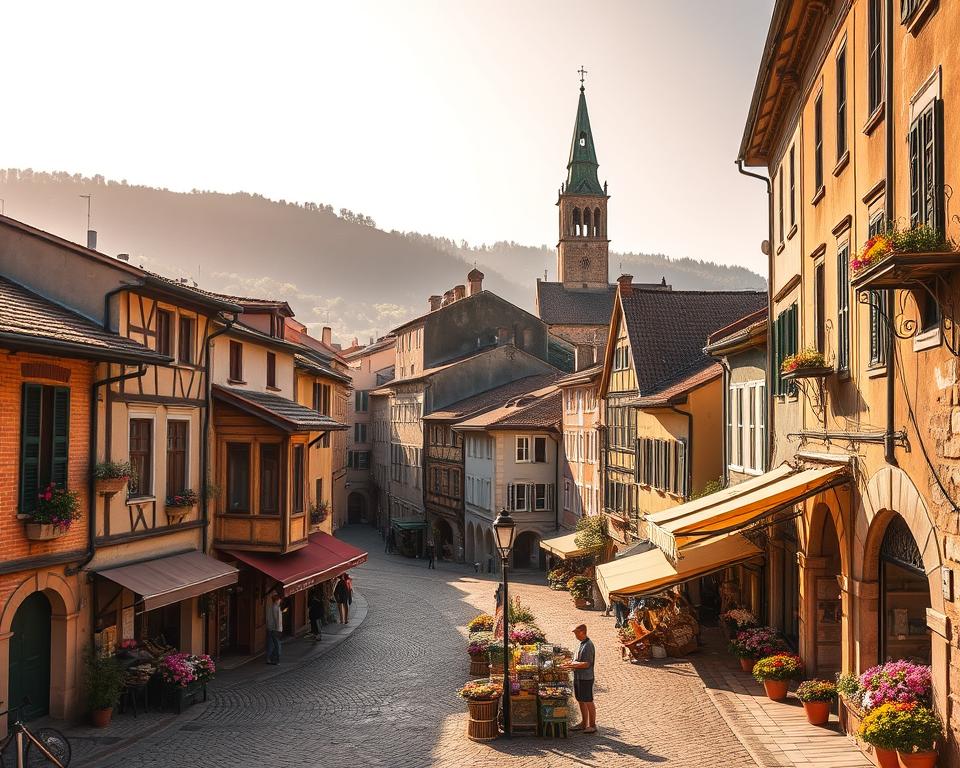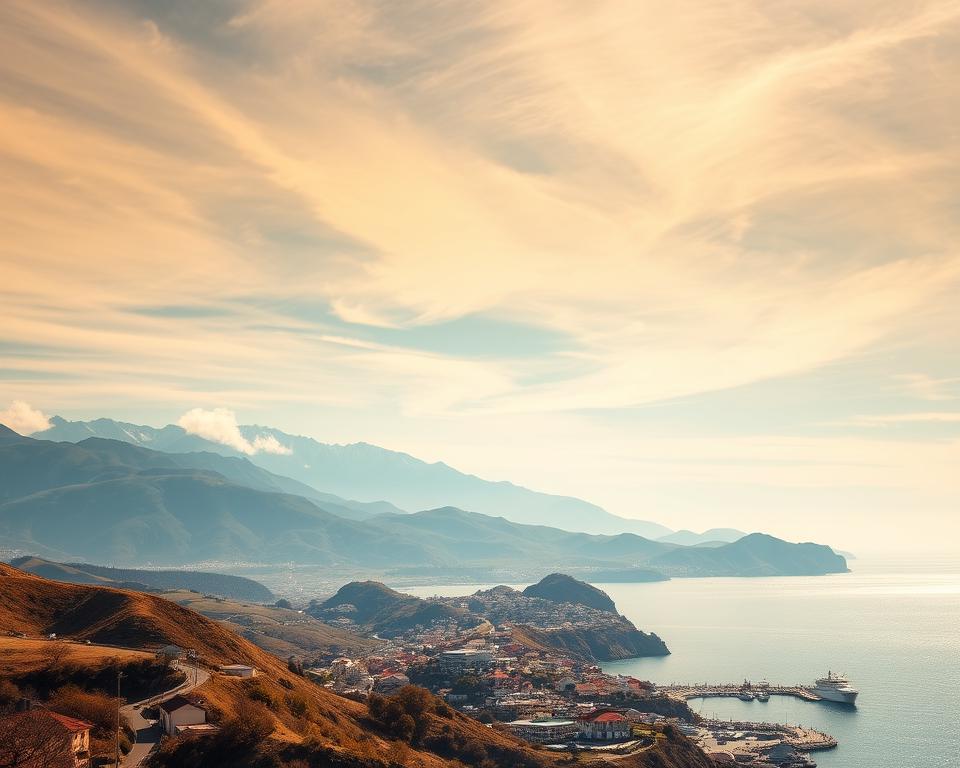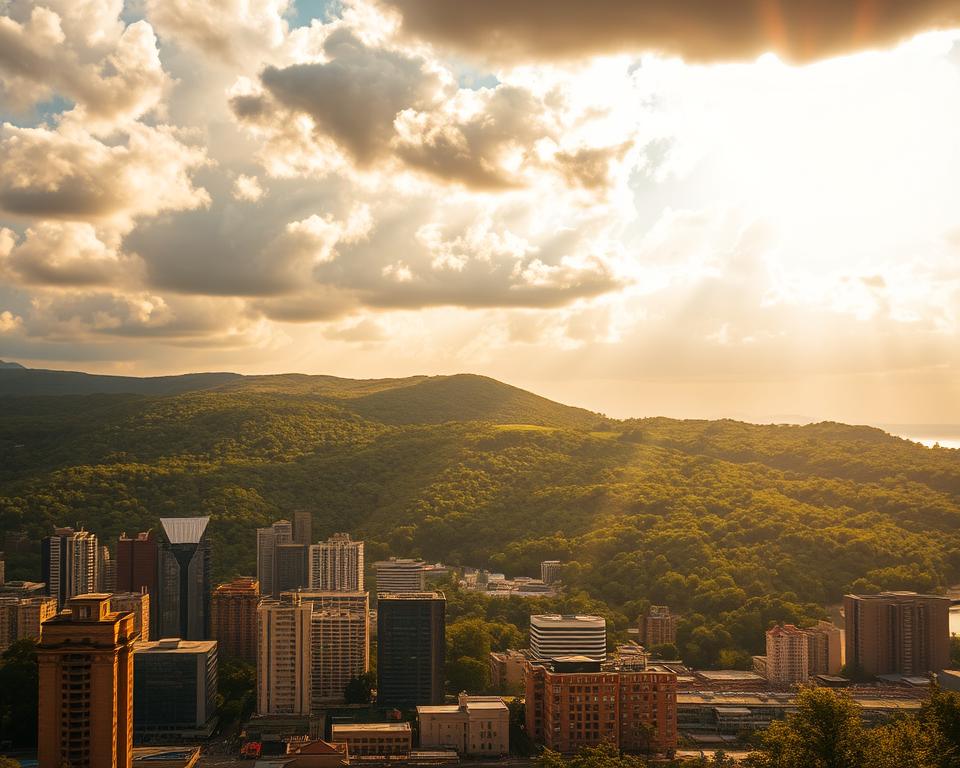Anúncios
Destinations checklist helps you plan smarter in 2025 by focusing on value, sustainability, and tech-backed choices without promising a perfect trip.
The world is shifting: crowd patterns, seasonal highs, and access rules now shape your days. Note simple facts that affect planning — the Taj Mahal closes on Fridays, Victoria Falls shows differ by season and side, and the Galápagos can be reached by land with local speedboats. These details save time and money when you book.
Some places reward different trip styles. Alaska offers more than cruises, Ha Long Bay changes if you stay overnight, and Maasai Mara walking is allowed in conservancies, not the main reserve. Use fare alerts, park reservation systems, and official sites to protect your plans. This list is living: update it, travel responsibly, and let practical guidance help you craft one best trip and rich experiences that fit your life.
Introduction: what’s new in 2025 travel, and why your Destinations checklist needs an update
This year, smart planning mixes value, ethics, and new tech. You’ll find that small timing choices and local rules change what you can see and how you feel. This short intro shows why a living list helps you get better experiences without overpromising results.
Smarter planning: sustainability, value, and tech shape choices
Stay aware of cost versus impact. Choosing conservancy stays near the Maasai Mara supports communities and reduces crowded reserves. Reef-safe behavior on the Great Barrier Reef protects coral and your snorkeling time.
Anúncios
Icons reimagined: from World Heritage to wildlife, with timing that matters
Timing changes everything. Angkor at sunrise is cooler and less crowded. Victoria Falls in shoulder season shows strong rainbows. Stonehenge inner-circle visits add history and art context.
Safety, culture, and respect: traveling responsibly in a changing world
Use official sites for permits and caps. Follow local operator standards for whale shark swims. Dress for temple codes, be quiet near the Blue Mosque during prayer, and ask before photographing people.
- Use tech for alerts and permits, but hire guides for context.
- Keep your plan flexible for closures like the Taj Mahal on Fridays.
- Document memories, but stay present—one place at a time.
This list is a practical tool to organize trips by season, culture, and logistics—not a one-size-fits-all plan. Verify rules year to year and travel with respect.
Anúncios
The sustainability shift: choosing places that protect nature and culture
Conscious travel means picking sites and operators that keep nature and heritage intact.
Choose reef-friendly and low-impact options. At the Great Barrier Reef, ask operators about reef-safe practices before you book. Use reef-safe sunscreen and practice buoyancy control so you don’t touch coral. Scenic flights over Heart Reef and small snorkel trips can reduce pressure on popular dive spots.
Low-impact island stays and community support
In the Galápagos, prefer land-based stays on Santa Cruz, Isabela, or San Cristóbal. Move between islands by regulated speedboats to lower your footprint versus large cruise ships.
Conservancies, guided walks, and fair fees
Near the Maasai Mara, conservancies allow guided walking with Maasai hosts, fewer vehicles, and fees that benefit local families. Choose conservancy lodges that show transparent hiring and community programs.
Respectful heritage visits
For Petra, Angkor, and Borobudur, take small-group tours with certified local guides. Early entry eases heat and crowds. Dress modestly, follow photography rules, and check official UNESCO or park pages for timed entries and visitor caps.
- Limit single-use plastics and use refillable bottles.
- Pick wildlife experiences with clear welfare rules: no touching, no baiting, respectful distances.
- Spend across local businesses—restaurants, artisans, community stays—to spread benefits.
“Sustainable choices often mean calmer waters, fewer crowds, and deeper ties to place.”
Plan ahead and verify current site rules. Thoughtful choices protect world heritage and enrich your bucket list travel without promises—check official guidance before you go.
Overtourism to undertourism: spreading out across seasons and regions
You can beat the crowds by shifting when and where you go within the same region. A few timing and routing choices cut wait times and improve value without promising perfect conditions.
Ha Long Bay benefits from an overnight approach. Stay on Cat Ba Island and book an overnight junk to explore quieter inlets and avoid midday day-trip congestion.
Consider cruises that arrive at dawn for calmer views. When comparing itineraries, confirm port times and tender logistics so your boat drops you in less-trafficked areas.
Victoria Falls timing and crossings
The falls peak in high water from roughly February to May. That season is dramatic but misty. Shoulder months often give strong rainbows and thinner crowds.
- Compare both sides: Zimbabwe offers sweeping vistas; Zambia gives closer access and easier day-visas.
- Be flexible: Shoulder-season dates can lower hotel rates and shrink group sizes while keeping good water flow.
- Plan practicalities: Pre-book reputable operators, review safety and environmental policies, and verify border crossing rules and fees.
“Rotate popular hotspots with nearby alternatives to spread tourism income and reduce strain on resources.”
Before you visit, always check official park pages for caps or weather advisories and allow time buffers in your day plans.
Technology and trip design: tools that improve your planning in 2025
Smart tools now steer how you design a trip, from fare alerts to timed-entry slots. Use them to free up time and focus on the experiences that matter most.
Dynamic pricing and alerts
Set fare and hotel alerts for Alaska cruises and island routes. Flexible date windows often reveal big savings, and alerts flag flash deals so you can book fast.
For Alaska, compare ship itineraries with land options—Denali and Kenai Fjords add different wildlife and glacier views. Use flexible alerts for both.
Maps, permits, and timed slots
Download offline maps and save permit PDFs to your phone. Many world heritage sites and parks now use timed-entry systems.
Hold calendar slots for sunrise windows (Angkor, Borobudur) and special access like Stonehenge Inner Circle. Plan your day around confirmed times to cut lines.
Responsible content and sources
Rely on official pages—park services, UNESCO, and tourism boards—for closures, caps, and route changes. Bookmark those links so you can confirm details before you go.
AI trip boards vs. local guides
AI helps build route options, summarize opening hours, and make a shared trip board with confirmations. But a human guide still wins for safety, wildlife behavior, and cultural access.
- Track ferry and speedboat timetables; subscribe to operator updates.
- Keep a shared trip board of dates, confirmations, and entry windows.
- Create a simple plan B list for weather disruptions—museums, markets, or easy hikes.
“Tech organizes the list; local experts turn it into a safe, richer day in the field.”
Use both: let dynamic tools find value, and let verified operators deliver the one best on-the-ground experience. Check official sources before you book; nothing here is legal or guaranteed—just practical planning advice for your next bucket adventure.
Bucket list icons, updated: timing, routes, and realistic expectations
A smart visit to a famous place often starts the night before. Plan modestly and build in extra time so you can adapt for weather, entry windows, and preservation rules.
Machu Picchu and the Inca heartland: stay a night in Aguas Calientes to enter early or return later the same day. That doubles your chances against rain, and helps with altitude and steep stairs. Bring water, sun protection, and confirm the current entry circuits before you go.
The Taj Mahal: remember it is closed on Fridays. Sunrise entry gives cooler temps and softer light for photos. Dress modestly and follow site rules to respect a sacred place and its architecture.
The Great Wall: aim for Mutianyu or a quieter section before 9:30–10:00 a.m. Use a private transfer to beat tour waves and make the most of a calmer morning.
Stonehenge: consider Inner Circle access for a closer sense of scale and solar alignment. Special slots are limited, so pre-book sunrise or special access well in advance.
- Pre-book sunrise/special access slots; they shape your day.
- Expect stairs, altitude, and preservation rules; plan accordingly.
- Pair icons with nearby lesser-known sites to round out your trip.
“These buildings were built centuries or years ago; preservation rules evolve—follow the latest guidance.”
Keep calm expectations: iconic places draw crowds. A flexible plan and a respectful attitude help you enjoy the history, architecture, and the bucket list moments that matter most.
Islands to watch: nature, culture, and clear waters
Small islands often pack big surprises—clear waters, local culture, and simple logistics matter most.
Galápagos by land: base yourself on Santa Cruz, Isabela, or San Cristóbal and use regulated speedboats to move between islands. Ninety-seven percent of the archipelago is national park, so pick eco-lodges that support conservation and local guides. Expect simple boat timetables and bring dry bags for wet transfers.
Whitsundays and Heart Reef flights
Book a scenic flight to see Heart Reef—air views give scale you can’t get from a boat. Pair the flight with a Whitehaven Beach stop and reef-friendly snorkeling. Use reef-safe sunscreen and follow no-touch rules to protect coral and your swim time.
Piaynemo, Raja Ampat
Piaynemo rewards effort: the viewpoint involves about 318 steps in hot, humid conditions. Start early, carry water, and wear sun protection. Choose eco-lodges with clear conservation practices to keep this world beauty intact.
Exuma’s Pig Beach
Set expectations: the pigs swim, but they are animals with needs. Do not chase or feed them human food. Follow operator safety and welfare rules and book licensed boat operators in advance.
- Practical tips: pack quick-dry layers, reef shoes, and a small first-aid kit.
- Booking: reserve beach and reef visits early—some places limit daily numbers.
- Support: eat at local spots and hire community guides to keep tourism benefits nearby.
“Respect rules, travel light, and let local care protect these places for your next bucket trip.”
Urban culture that feels fresh in 2025
Urban corners in 2025 reward slow walking and small, local discoveries. Spend time in tight alleys, riverfront lanes, and village-like streets to feel a place beyond its guidebook photos.
Tokyo’s Golden Gai: tiny bars with big personality
Golden Gai in Shinjuku is a cluster of tiny bars down narrow alleys. Seating is limited; expect small cover charges and cozy conversations.
Tip: Bring cash and be ready to chat briefly. Respect regulars and ask before photographing interiors or people.
Istanbul moments: call to prayer near the Blue Mosque
Hearing the ezan by the Blue Mosque is a memorable cultural moment. Find a respectful spot off main walkways and dress modestly near religious buildings.
Tip: Keep noise low and avoid blocking entrances during prayer times.
Porto and port wine: Vila Nova de Gaia cellars
Pre-book a couple of Gaia cellar tours (for example, Sandeman or Graham’s) and pair tastings with small plates in Ribeira. The riverfront shows striking architecture and photo angles.
Santorini on foot: the Fira–Oia caldera walk
The 4–5 hour Fira–Oia walk shines at golden hour. Start late afternoon, wear sturdy shoes, carry water, and pack sun protection.
Tip: Stop at village cafes for local food and sample small plates before the trail. For more city and neighbourhood ideas, see coolest neighbourhoods.
“Slow walks, local rules, and small tastings reveal a city’s most human side.”
Wildlife-first safaris and ethical encounters
A wildlife-first approach means planning by season and by the animal’s needs, not just photo chances. You’ll get more from a trip when you respect local rules and give wildlife space.

Migration timing and crowd realities
Plan for the Mara–Serengeti migration in roughly August–October. Sightings vary and vehicles cluster near river crossings, so build buffer days and keep expectations flexible.
Walking with local guides
Walking safaris are allowed in conservancies, not the main reserve. Choose conservancy stays to walk with Maasai guides, reduce vehicle pressure, and learn local conservation work.
Marine windows and operator standards
For whale sharks off Cancun and Isla Mujeres, travel in peak seasonal windows and book operators that limit group size and ban touching or feeding. Ask for operator certifications and safety protocols before you go.
Cold-water encounters
Belugas in northern Manitoba are best mid-June to September. Dress for cold splashes, follow approach-distance rules, and listen to briefing notes on safety and animal welfare.
- Check national park and marine area rules for permits, speed limits, and conduct codes.
- Bring binoculars and long lenses so you keep distance and minimize disturbance.
- Prefer lodges and operators with clear conservation and community partnerships.
- Say no to drones, flash photos, or surrounding animals with vehicles.
“Animal-first ethics protect wildlife and make your bucket experience richer — sightings are never guaranteed.”
Nature therapy: hot springs, glaciers, and Northern Lights
Hot springs, ice-carved fjords, and polar night skies each bring a simple kind of recovery you can plan for.
Iceland: Blue Lagoon and Golden Circle options
You can self-drive Iceland’s Golden Circle to control pace and photo stops, or join a guided day tour to relax and learn local context.
Self-drive gives flexibility for side roads and quieter viewpoints, but winter roads may close—always check road conditions with official agencies.
Guided day tours handle timing, parking, and expert stops at geysers and falls. Smaller groups let you swap quick views for longer photography windows.
Book Blue Lagoon entry times in advance, pack swim layers, and confirm maintenance closures on the official site. Treat a soak as practical recovery after a long day of travel.
Alaska beyond cruises: Denali, Kenai Fjords, and aurora timing
Look beyond the sea routes—Denali offers wildlife viewing and hiking, while Kenai Fjords boat tours bring close glacier views and marine life.
Winter opens aurora possibilities. The lights favor dark, clear nights; bring warm layers and manage expectations because weather is variable.
- Packing: layer base pieces, waterproof shells, and traction for icy paths.
- Group size: choose smaller tours for flexible stops and better photography windows.
- Respect: stay on paths to protect fragile mosses and geothermal crusts.
- Timing: avoid peak bus arrivals when possible and pair hot springs with long outdoor days for recovery.
“Nature therapy is practical: plan for safety, book in advance, and let the landscape do the rest.”
Heritage deep dives: the power of World Heritage sites
World Heritage sites reward early attention: mornings often reveal calm courtyards and cooler light. Start before peak time so you can read reliefs, notice construction details, and move between monuments with fewer people in the frame.
Angkor sunrise routines and cooler morning exploration
Angkor is a sunrise must—book a multi-day pass so you can enter early and return to quieter temple loops afterward. After sunrise, head to nearby smaller temples where stone carvings feel less rushed and the light is kinder on the bas-reliefs.
Petra by day and Petra at Night: different perspectives
See Petra by day to map the site’s scale and routes. Then choose Petra at Night for the candlelit Siq and Treasury atmosphere—expect uneven terrain, bring a headlamp, and follow staff instructions for photography and safety.
Borobudur at dawn: combined routes with Prambanan
Secure pre-dawn access to Borobudur for sunrise views and quiet contemplation. Later, pair the visit with Prambanan to compare Hindu and Buddhist architecture and art in a single day—buy timed tickets and confirm entry rules in advance.
- Hire certified guides to decode iconography, restoration history, and context.
- Dress modestly, respect no-climb zones, and follow temple etiquette to protect fragile buildings.
- Bring water, sun protection, and expect changing photography rules—follow staff directions at night events.
- Explore satellite temples for calmer study of history and architecture; accept route changes that aid conservation.
“Early starts, local guides, and quiet side temples turn a visit into real learning rather than a rushed photo stop.”
Adventure with water at the center
When water leads the itinerary, small timing and route choices make the biggest difference. You can shape an entire adventure by picking when you cruise and where you sleep.
Ha Long Bay: overnight junks vs. day trips
Day trips give fast highlights and clear photo stops, but they tend to run with larger crowds and tight schedules.
Overnight junks let you reach quieter inlets at dawn and dusk, when the waters calm and the scenery softens. Base yourself on Cat Ba to avoid the busiest clusters and to choose longer, varied boat routes.
Zimbabwe offers sweeping panoramic views. Zambia gives closer approaches and simpler day-visa crossings for many visitors.
High water (late wet season) brings dramatic spray but less visibility; shoulder months often produce vivid rainbows and clearer photo light. If you plan to visit both sides in one day, allow ample border time and confirm crossing rules.
- Safety first: wear life jackets, choose licensed operators, and check weather and water advisories before any boat activity.
- Pack dry bags, reef-safe sunscreen, and non-slip footwear for wet decks and viewpoints.
- Favor early- or late-day cruising for calmer waters and better light on the scenery.
- Confirm park fees and viewpoint hours for both sides of the Falls and keep a Plan B ready—water levels change fast.
- Support small-group boat operators who follow environmental and safety standards.
“Water adventures reward flexibility: expect changing conditions and plan for safety, not guarantees.”
Culinary and craft: tasting places through food and wine
Taste often reveals a place faster than a map does. Use meals and markets as a gentle way into local culture and history.
Porto: reserve a couple of Vila Nova de Gaia cellar tastings and learn basic port styles before you go. Pair wine flights with traditional Portuguese plates along the Douro for a fuller experience.
Tanzania: visit markets in Arusha or Dar es Salaam for spices, fresh produce, and safe street bites. Follow vendor guidance, watch hygiene cues, and buy small portions to sample widely.
Meteora: try simple Greek bites—souvlaki, pies, and local cheeses—before or after monastery visits. Dress respectfully when pairing food stops with sacred sites.
- Book popular tastings in high season to avoid sellouts.
- Take a local-led food tour to learn ingredients, art, and regional stories.
- Bring a small tote for artisan purchases and support independent makers.
- Learn tipping norms and dress codes when dining near cultural sites.
“Food and craft make a friendly, practical lens on a city’s identity.”
Road trips and slow travel that fit 2025
A well-planned driving day can show you a country’s varied landscapes without rushing the view. Slow travel favors fewer hotel changes, market stops, and extra time for short hikes and viewpoints.
Iceland — Golden Circle loop: Start Reykjavik, drive to Þingvellir (40–50 min), then Geysir (50 min), and Gullfoss (10–15 min). Allow 6–8 hours with stops. In winter, check road and weather sites—chains or 4WD may be required.
Croatia — coast to Plitvice: Overnight near Plitvice to enter early or late and avoid the 10:00 a.m. tour-bus peak. Quiet boardwalks reward sunrise or dusk visits. Combine coastal cities with inland villages for varied regional beauty.
- Pack layers, snacks, water, and a small first-aid kit.
- Use offline maps in rural areas; know toll and parking basics for each region.
- Drive cautiously on narrow roads, respect speed limits, and adjust for weather.
- Book flexibly so you can pivot around road closures or park caps.
“Slow travel turns a drive into a series of meaningful stops—plan for safety and savor the beauty.”
Cruises reborn: when ships improve access, not just comfort
Ship itineraries can shape your best moments at sea by prioritizing timing and routing over onboard luxuries. When planners schedule arrivals for quiet hours, you get dramatic views with fewer day‑trip crowds.
Alaska’s Inside Passage delivers glacier fronts and marine life right to your deck. Choose routes that include longer port days or optional land extensions to Denali and Kenai Fjords so your trip reaches inland parks and wildlife-rich islands. From your balcony you can watch calving, whales, and sea birds without stepping ashore.
Asian approaches that arrive at dawn
For Ha Long Bay, aim for sailings that slip into the bay at dawn. Early entry gives cinematic limestone beauty before the day boats fill the water.
- Pick lines that offer extended port times and local guides for meaningful onshore visits.
- Compare environmental policies and regional certifications when you book.
- Plan buffer time for tender ports, verify licensed shore operators, and favor small‑group, low‑impact excursions.
- Use dynamic pricing alerts for shoulder‑season offers and pack layers, binoculars, and dry pouches for cold deck moments.
“Good routing turns transit into access — flexibility saves your trip when weather or tide changes plans.”
Budget, timing, and practical tips for this year
Plan money and timing together so small shifts can cut costs and crowd headaches. A little flexibility in dates often yields better fares and calmer mornings at busy sites.
Shoulder-season windows are often your best bet to visit icons and islands. You keep decent weather, lower prices, and fewer tour groups. Watch forecast patterns and local weather when you lock dates.
Permits, closures, and daily caps matter at many heritage sites and national park entrances. Timed entries (Angkor, Stonehenge), daily quotas (Galápagos), and temporary closures happen—check official pages before you buy tickets.
Pick small-group tours and community-owned stays when you can. These options give more personal guide time and help keep tourism dollars local. They often work better inside a national park or near fragile world heritage sites.
Build a realistic budget with buffers for fuel surcharges, park fees, and gear rentals. Think in both cash and card—some operators prefer one or charge fees for cards.
Pack smart: refillable bottles, layers, and a simple first-aid kit cut on-the-ground costs. Read the “things to know” sections on park and temple sites for current hours and route changes.
- Pre-book timed entries and confirm rules on official sites.
- Use flexible flight/hotel options to shift by a day if prices move.
- Document confirmations, permits, and entry times in one shared file or app.
“Practical planning protects your time and wallet—verify permits and stay adaptable.”
Destinations checklist
This quick guide groups top places so you can pair interests, budget, and timing.
Nature and wildlife
Galápagos: favor land-based stays on Santa Cruz, Isabela, or San Cristóbal and move by regulated speedboats. That lowers impact and gives flexible day trips.
Maasai Mara / Serengeti: aim for migration windows and add buffer days. Choose conservancy lodges and certified guides for walking and ethical viewing.
Alaska: combine Denali with Kenai Fjords for varied wildlife and glacier views. Check seasonal access and pack for changeable weather.
Great Barrier Reef: pick reef-friendly snorkel operators and consider Heart Reef flights to reduce dive pressure.
World heritage and culture
Petra: do a daytime loop and reserve Petra at Night for atmosphere. Wear sturdy shoes and bring a headlamp for uneven paths.
Angkor: book sunrise windows and multi-day passes to spread visits across main and quieter temples.
Borobudur: secure pre-dawn access and pair with Prambanan for a comparative art and architecture day.
Taj Mahal & Stonehenge: plan around closures and Inner Circle slots; pre-book timed entries when offered.
Water and islands
Ha Long Bay: overnight cruises reach quieter inlets; base yourself on Cat Ba to escape day-boat crowds.
Whitsundays: combine Heart Reef flights with reef-safe snorkeling and a Whitehaven Beach stop.
Exuma & Raja Ampat: expect simple boat timetables; avoid feeding wildlife at Pig Beach and tackle Piaynemo early for the viewpoint steps.
Cities and flavors
Tokyo: Golden Gai is best for brief, cash-first bar visits—be respectful and ask before photos.
Istanbul: find a quiet spot to hear the call to prayer near the Blue Mosque and dress modestly.
Porto: book Gaia cellar tours ahead and pair tastings with riverside plates.
Santorini: walk Fira–Oia at golden hour; carry water and good shoes.
- Plan by season: map this list by weather, migration, and permit windows.
- Combine wisely: pair regional items (Cambodia + Indonesia need different routing; Vietnam + Whitsundays are separate trips).
- Prioritize bookings: timed entries, limited slots, and reef activities often sell out—reserve first.
- Responsible travel: reef-safe sunscreen, modest dress at temples, and ethical wildlife rules protect beauty for next travelers.
“Use this living list to personalize routes by season, interest, and budget—no guarantees, just practical priorities.”
Conclusion
, Plan with purpose by closing your trip with a short promise: respect the place, follow official rules, and savor the moment. Keep timed entries, conservancy walks, reef-safe conduct, and seasonal windows (auroras, falls, migrations) on your radar as you finalize dates.
Use official park and tourism board pages first for permits and closures. Pace your days so cities, food stops, and quiet nature moments become the dream experiences you remember for life.
Keep the list flexible: adapt to weather or local changes, favor animal welfare, and pick community-first stays. Thank you for caring about the world—share what you learn so fellow travelers protect these places and make every bucket moment count.



